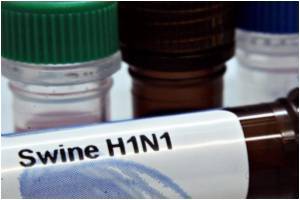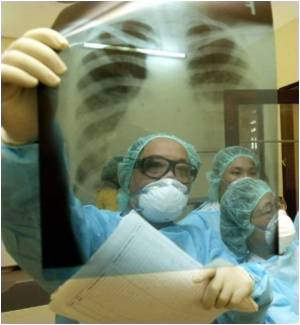Victor Bryan, U-M 2000th patient treated by ECMO technology.

ECMO was developed in the 1970s by U-M surgeon Robert Bartlett, now a professor emeritus. The technology - described by some of Bartletts colleagues as "extraordinary" -- does the work of a patient's failing heart and lungs for a period of weeks, sometimes months. That's often long enough for the heart and lungs to rest and recover, increasing the patient's chance of survival.
The technology has spread worldwide, with more than 40,000 cases treated and more than 24,000 lives saved. ECMO also has the extraordinary legacy of diminishing mortality in conditions where patients used to have no chance of survival.Manuel and Victor Bryan were born Nov. 1, 2010 at U-M's C. S. Mott Children's Hospital. Manuel was born healthy.
As expected, Victor's lungs were so underdeveloped that he was placed on ECMO immediately following birth. The following day, he was taken to surgery to repair his prenatally diagnosed congenital diaphragmatic hernia - to fashion a new diaphragm and to return his stomach, liver and intestines out of the upper cavity of the chest, where they were pushing up against the heart and lungs. Infants born with a congenital diaphragmatic hernia often have respiratory problems, with the severity varying by case from mild to life-threatening. In Victor's case, it was life-threatening, so much so that Victor had two runs with ECMO. He is now recovering from a second surgery to close his abdomen.
He is a fighter, says his mom Valerie, who chose Victor's name after her eye was caught by a University of Michigan poster invoking the school's Hail to the Victors fight song. He will be Victorious.
Dr. Ronald Hirschl says that Victor would not be alive today were it not for ECMO technology.
Advertisement
Victor has become a special baby for other reasons. He is the University of Michigan's 2000th patient to be placed on ECMO.
The milestone is one that was watched closely by the team of doctors, researchers, nurses and administrators who run the ECMO program.
Advertisement
Victor is a very special baby, says Bartlett, who retired from clinical practice in 2005 but continues to run the large laboratory where ECMO was developed, now focused on perfecting the technology. We can't wait for him to join his brother Manny at home soon.
Bartlett says the future of ECMO after this 2000th patient milestone is brighter than ever. His lab continues to work on the development of artificial organs and surfaces to replace plastic tubing currently used to eliminate the need for blood thinners, which remains one of the biggest drawbacks of ECMO technology.
That breakthrough is just a few short years away. We are very close.
Victor shares a special legacy with the first successful ECMO baby, now an adult woman whose name is Esperanza or Hope in Spanish.
Esperanza's mom gave birth to her in California 35 years ago. In the country illegally, the frightened mom left her baby orphaned in the California hospital where Bartlett worked at the time. Her life was saved by ECMO. Esperanza was later adopted by a local family. She is now married with children, living in Missouri.
Hundreds of U-M staff members have worked on the ECMO project for over 30 years. The team has been not so quietly cheering for Victor as he grows and overcomes hurdles. Nurses readily volunteer to hold his twin brother Manny every time Valerie visits Victor at Motts the Neonatal Intensive Care Unit. They will readily admit they're in love with the infants.
While Victor still has some hurdles to overcome, Valerie and her family savor the miracle that he is alive today thanks to ECMO technology. Dr. Bartlett who is retired from practice, visits Victor periodically to check on his progress. Valerie couldn't be happier she had a chance to thank Bartlett. I just wanted to make sure I could give him a hug - for saving my baby, says Valerie.
Source-Newswise








